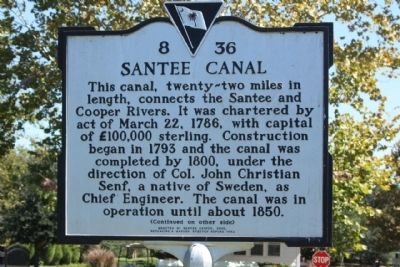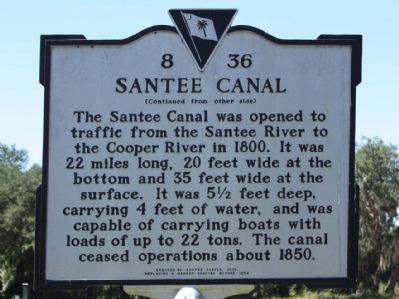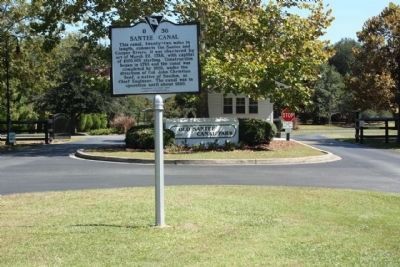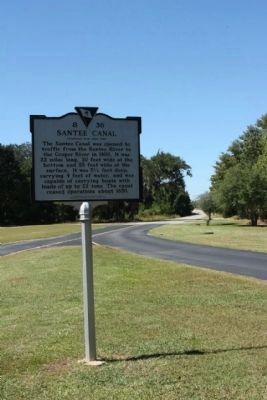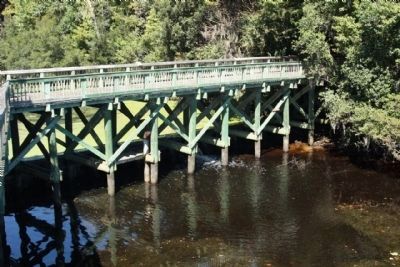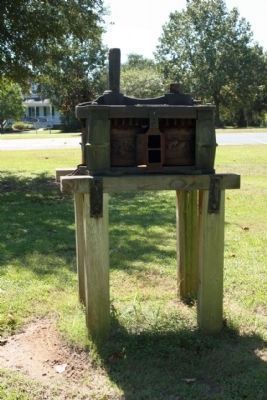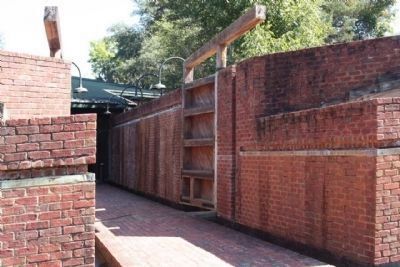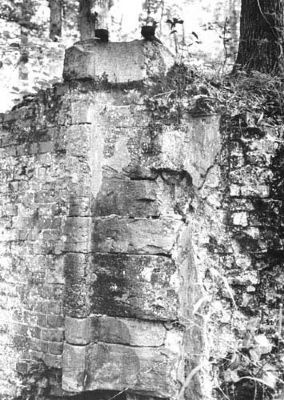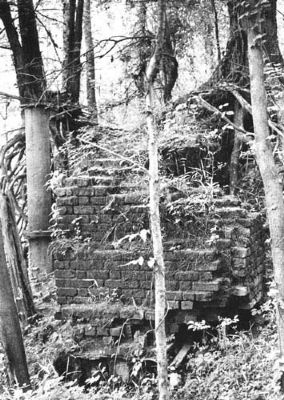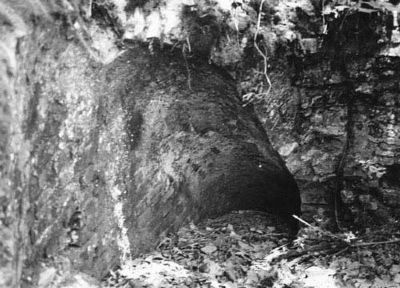Moncks Corner in Berkeley County, South Carolina — The American South (South Atlantic)
Santee Canal
This canal, twenty-two miles in length, connects the Santee and Cooper Rivers. It was chartered by Act of March 22,1786, with capital of £100,000 sterling. Construction began in 1793, and the canal was c ompleted in 1800, under the direction of Col. John Christian Senf, a native of Sweden, as Chief Engineer. The canal was in operation until about 1850.
(Reverse text)
The Santee Canal was opened to traffic from the Santee River to the Cooper River in 1800. It was 22 miles long, 20 feet wide at the bottom and 35 feet wide at the surface. It was 5½ feet deep, carrying 4 feet of water, and was capable of carrying boats with loads of up to 22 tons. The canal ceased operations about 1850.
Erected 2005 by Santee Cooper, replacing a marker erected before 1954. (Marker Number 8-36.)
Topics. This historical marker is listed in this topic list: Waterways & Vessels. A significant historical month for this entry is March 1861.
Location. 33° 11.633′ N, 79° 58.44′ W. Marker is in Moncks Corner, South Carolina, in Berkeley County. Marker is on Stony Landing Road, in the median. Located at the Old Santee Canal Park entrance. Touch for map. Marker is in this post office area: Moncks Corner SC 29461, United States of America. Touch for directions.
Other nearby markers. At least 8 other markers are within one mile of this marker, measured as the crow flies. Berkeley County Confederate Monument (about 400 feet away, measured in a direct line); Berkeley County Museum and Heritage Center: A County's Story (about 400 feet away); C.S.S. David (about 500 feet away); Fort Fair Lawn: An Archeaological Treasure (about 700 feet away); Colleton House: “Unmanly Practices” or Legitimate Target? (about 700 feet away); Too Formidable to Take (approx. 0.2 miles away); Stony Landing House (approx. ¼ mile away); First Site of Moncks Corner (approx. 1.1 miles away). Touch for a list and map of all markers in Moncks Corner.
More about this marker. The marker's location was once named "Old Santee Canal State Park" on its completion in 1989. In June 1999, state-owned utility Santee Cooper (formal name: S.C. Public Service Authority), which constructed the park, assumed ownership and operation of the park and renamed it the Old Santee Canal Park.
Regarding Santee Canal. The Santee Canal was constructed between 1793 and 1800 under the direction of Col. John Christian Senf, South Carolina State Engineer. Conceived to provide a shorter, safer water route from inland South Carolina to Charleston, the canal was one of the earliest important canals in the United States and perhaps the earliest major internal improvement project in the state. Originally intended as a delivery route for foodstuffs, the advent of successful cotton production made the canal more useful for transporting cotton bales. In 1830, during its most prosperous period, 720 boats arrived in Charleston bearing about 70,000 bales of cotton via the canal. The canal route was twenty-two miles long, beginning two miles below Greenwood Swamp on the Santee River and entering the Cooper River at Stoney Landing, approximately two miles east of Moncks Corner. The canal was thirty-five feet wide at the top and five and one half feet deep, sloping to a bottom width of twenty feet. With the exception of a wooden tidal lock, all the locks were made of brick and stone. In addition to the canal itself, there were several warehouses, keepers’ houses, and other ancillary buildings along the route. All associated outbuildings, turning basins, lock bridges and the wooden lock have been destroyed. The towpaths are visible for large parts of the canal. The remains of the canal are overgrown with vegetation and are rapidly deteriorating. Listed in the National Register May 5, 1982. (S.C. Dept. of Archives and History)
Also see . . .
Old Santee Canal Park. Canal website homepage (Submitted on October 26, 2009, by Mike Stroud of Bluffton, South Carolina.)
Credits. This page was last revised on April 21, 2021. It was originally submitted on October 26, 2009, by Mike Stroud of Bluffton, South Carolina. This page has been viewed 2,599 times since then and 165 times this year. Photos: 1, 2, 3, 4, 5, 6, 7, 8, 9, 10. submitted on October 26, 2009, by Mike Stroud of Bluffton, South Carolina. • Craig Swain was the editor who published this page.
